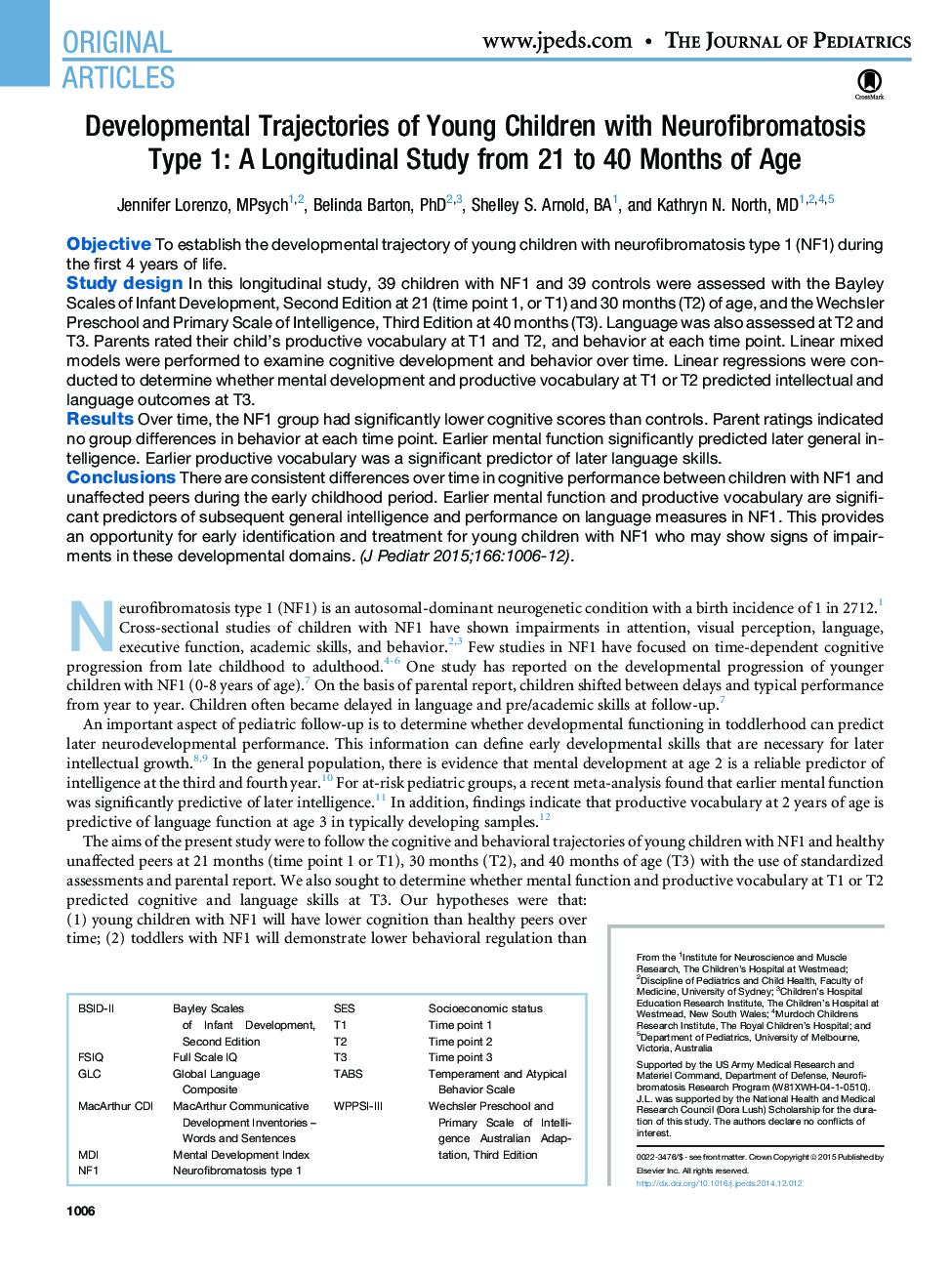| Article ID | Journal | Published Year | Pages | File Type |
|---|---|---|---|---|
| 6221542 | The Journal of Pediatrics | 2015 | 8 Pages |
ObjectiveTo establish the developmental trajectory of young children with neurofibromatosis type 1 (NF1) during the first 4Â years of life.Study designIn this longitudinal study, 39 children with NF1 and 39 controls were assessed with the Bayley Scales of Infant Development, Second Edition at 21 (time point 1, or T1) and 30Â months (T2) of age, and the Wechsler Preschool and Primary Scale of Intelligence, Third Edition at 40Â months (T3). Language was also assessed at T2 and T3. Parents rated their child's productive vocabulary at T1 and T2, and behavior at each time point. Linear mixed models were performed to examine cognitive development and behavior over time. Linear regressions were conducted to determine whether mental development and productive vocabulary at T1 or T2 predicted intellectual and language outcomes at T3.ResultsOver time, the NF1 group had significantly lower cognitive scores than controls. Parent ratings indicated no group differences in behavior at each time point. Earlier mental function significantly predicted later general intelligence. Earlier productive vocabulary was a significant predictor of later language skills.ConclusionsThere are consistent differences over time in cognitive performance between children with NF1 and unaffected peers during the early childhood period. Earlier mental function and productive vocabulary are significant predictors of subsequent general intelligence and performance on language measures in NF1. This provides an opportunity for early identification and treatment for young children with NF1 who may show signs of impairments in these developmental domains.
